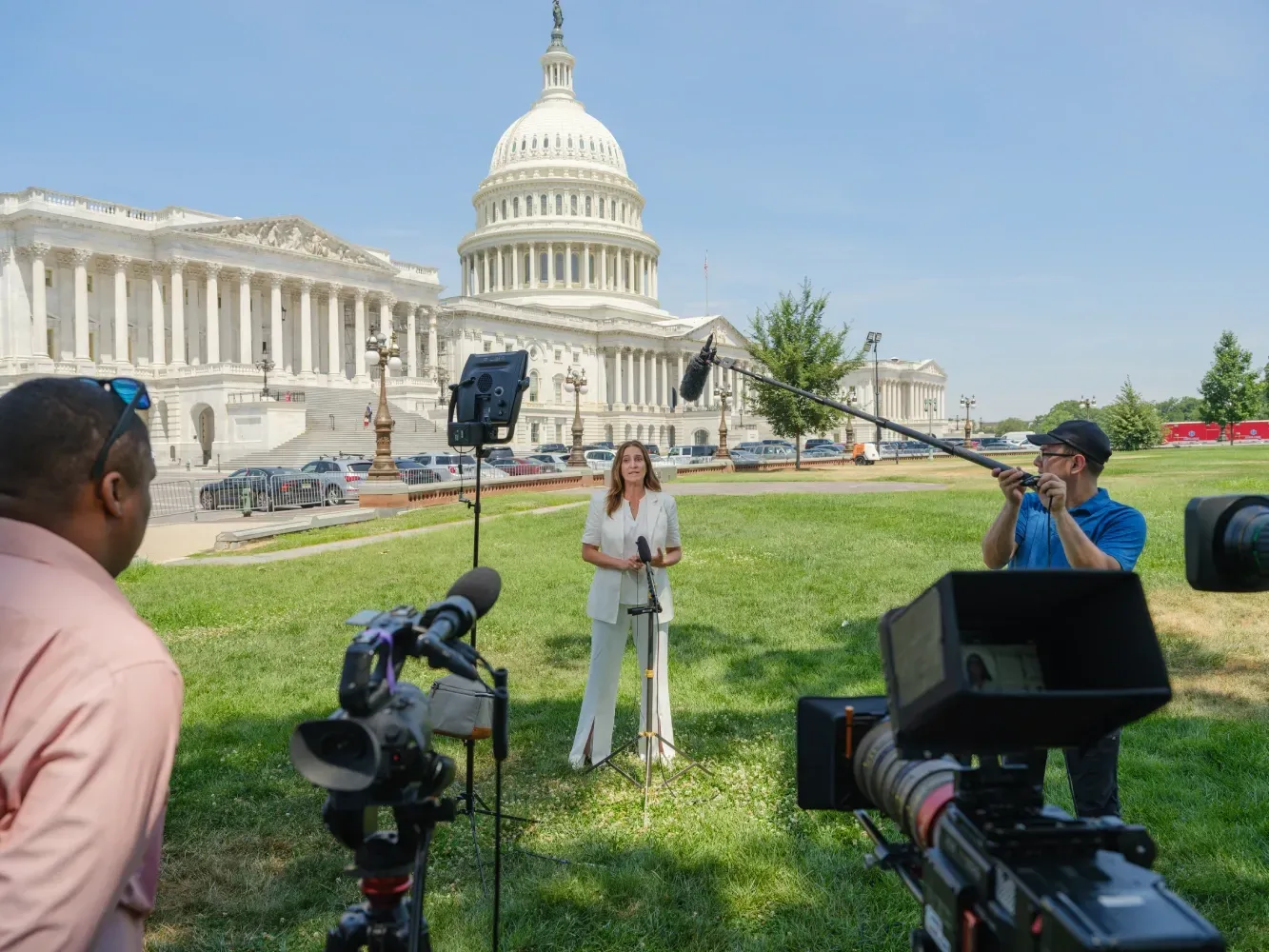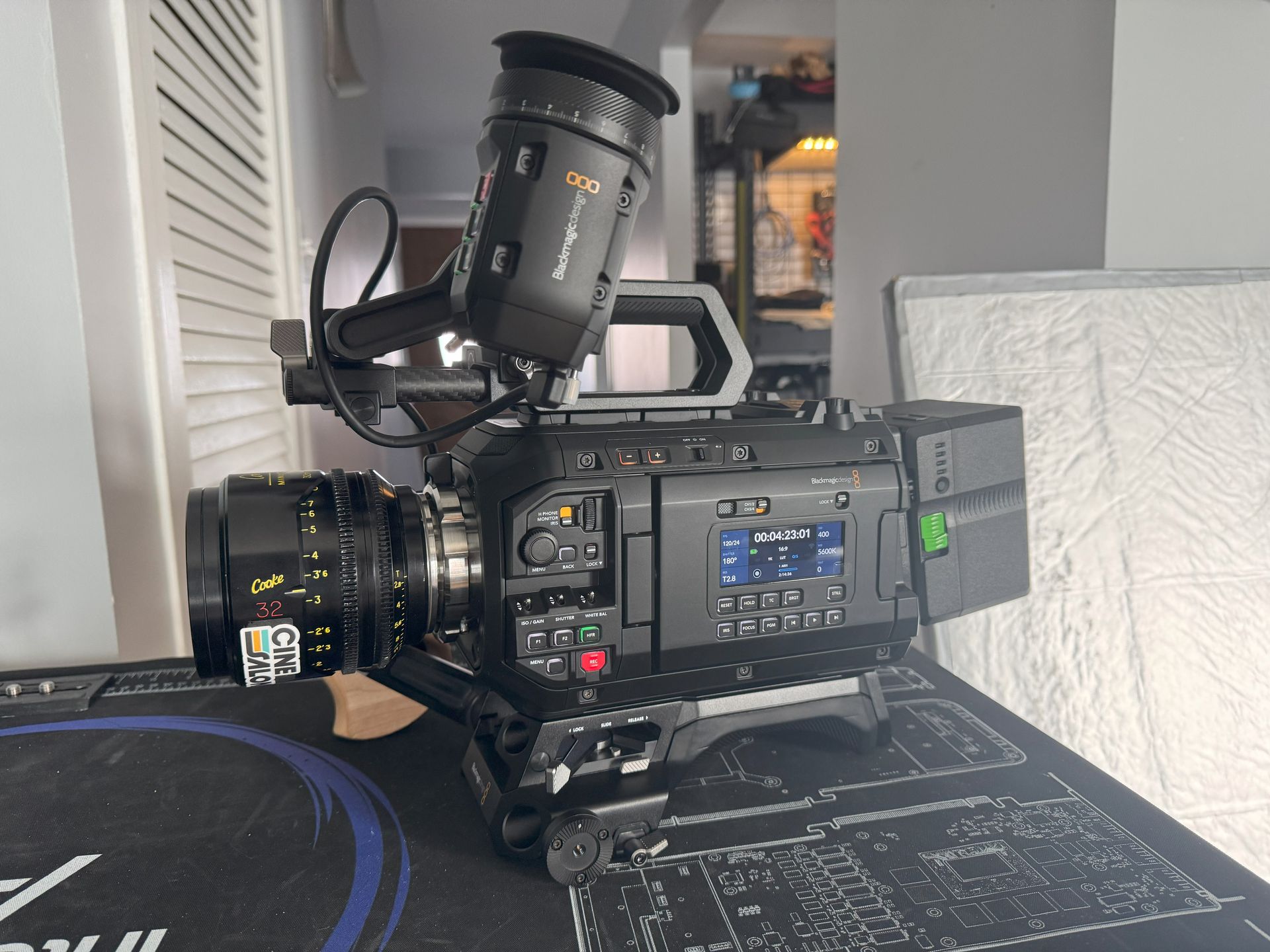
Video marketing isn't just a buzzword; it's a vital part of the modern real estate industry.
A video can offer much more than a photo or text description, providing potential buyers with an immersive property experience. It's no wonder 87% of marketing professionals use video as a marketing tool.
In the realm of real estate, video marketing is increasingly important. Not only can it showcase a property, but it also helps build a personal connection with potential clients. Videos let your personality shine, allowing clients to feel like they know you before meeting you.
Benefits of Using Videos for Real Estate Marketing
The benefits of video marketing for real estate agents are plentiful. First and foremost, videos can effectively showcase properties. Rather than relying on photos and descriptions alone, videos give buyers an actual walkthrough experience. They offer a realistic impression of a property's space, layout, and overall feel.
Moreover, videos can increase your online visibility. Google algorithms favor video content, meaning integrating videos into your marketing strategy can boost your search engine ranking.
Additionally, videos are a powerful tool for building trust with potential clients. By putting a face to a name, they humanize your brand, allowing you to connect more personally with your audience.
Lastly, video content is highly shareable. This makes it a potent tool for expanding your audience, reaching more potential clients, and driving more traffic to your website or property listings.

Current Trends in Real Estate Video Marketing
The world of real estate video marketing is ever-evolving, with new trends emerging frequently. Virtual tours and drone footage have become especially popular, providing a comprehensive view of a property and its surroundings.
Live video is another trend gaining traction. Real estate agents use live streams on social media platforms to host Q&As, offer advice, or give virtual open house tours.
Finally, there's a growing trend of creating neighborhood tour videos. This gives potential buyers an idea of the local area, amenities, and community – factors that can significantly influence a purchasing decision.
In the dynamic landscape of real estate marketing, staying up-to-date with current trends can give you a competitive edge. As such, learning to use video marketing effectively is a skill no real estate agent should overlook.

Basics of Video Marketing
Video marketing is simple. It uses video to promote a product or service. For real estate agents, this means showcasing properties.
Video marketing is vital in today's world. More and more people prefer video over text. It's a powerful way to deliver your message.
Types of Video Content
There are many ways to use video in real estate. Let's look at some types of content you can create.
1. Property Walkthroughs
A property walkthrough is a video tour. It shows the interior and exterior of a house. Walkthroughs let viewers see the house without being there. They can get a feel for the space and layout.
2. Neighborhood Tours
Neighborhood tours are videos that showcase the local area. They can include local parks, schools, and amenities. These videos help potential buyers see the lifestyle they could have in the area.
3. Agent Introductions
Agent introduction videos are about you, the agent. They allow clients to get to know you before they meet you. This can help build trust and rapport.
4. Testimonials
Testimonial videos showcase previous clients. They share their positive experiences working with you. These videos can help to build trust with potential clients.
5. Real Estate Advice and Tips
Real estate advice and tips videos are informational. They provide helpful guidance for buying or selling a home. These videos position you as a trusted expert in your field.
6. Behind-the-Scenes Videos
Behind-the-scenes videos show the work you do behind the scenes. This could be preparing for an open house or staging a property for sale. These videos can give potential clients a glimpse into your process.
Importance of Storytelling in Video Marketing
Storytelling is key in video marketing. Stories make content more engaging. They can help viewers connect with you and your brand.
In real estate, stories can bring a property to life. They can show viewers what it would be like to live in a home. This can make your videos more engaging and memorable.
In conclusion, video marketing is a must for real estate agents. It allows you to showcase properties dynamically. It helps you build trust with potential clients. And it lets you tell compelling stories that engage viewers.
Tools & Equipment for Video Marketing
Creating great videos requires the right tools. Let's look at the equipment you need for video marketing.
Camera Options: Smartphone vs. Professional Camera
First, you need a camera. There are two options. You can use a smartphone or a professional camera.
1. Smartphone
A smartphone can shoot high-quality videos. It's easy to use. It's also less expensive than a professional camera. But, it may not offer the same quality as a professional camera.
2. Professional Camera
A professional camera offers higher quality. It can shoot videos in different conditions. For example, in low light. But, it can be expensive and hard to use.
Choose what fits your budget and needs. If you're starting, a smartphone may be enough.
Audio Equipment
Good audio is key. Bad audio can ruin a good video. Use a microphone for clear sound.
There are different types of microphones. Lapel microphones are small. You can clip them onto your clothing. Shotgun microphones are larger. They capture sound from a distance.
Lighting Equipment
Good lighting makes a video look professional. Use natural light when you can. If not, use lighting equipment.
There are many types of lighting equipment. Some are portable. Others are not. Choose what suits your needs.
Stabilization Tools
Stabilization tools keep your camera steady. They prevent shaky footage.
A tripod is a standard tool. It holds the camera steady on a flat surface. A gimbal is another tool. It steadies the camera while you move.
Editing Software
Editing software helps you polish your video. You can cut unnecessary parts. You can add music, text, and graphics.
There are free and paid options. Free software often has limited features. Paid software offers more options.
In conclusion, you need the right tools for video marketing. This includes a camera, audio equipment, and lighting. It would be best if you also had stabilization tools and editing software. Start with what you can afford. Upgrade as you go.
Scripting & Storyboarding for Real Estate Videos
Creating a video requires planning. This includes scripting and storyboarding. Let's look at each of these steps.
Importance of Pre-Production Planning
Planning is critical in video creation. It helps you stay organized. It also ensures your video meets its goals.
Without a plan, you may forget key points. Your video may also end up being too long or too short. Planning helps you avoid these issues.
Developing a Script
A script is your video guide. It outlines what you will say and do in the video. It helps you stay on track.
Start by deciding your video's goal. Then, write a script that helps you meet this goal.
Keep your script simple. Use clear, concise language. This makes your video easier to follow.
Creating a Storyboard
A storyboard is a visual plan for your video. It shows the sequence of scenes in your video.
Start by drawing a series of rectangles on a piece of paper. Then, sketch the main events of your video in these rectangles. Add notes about what is happening in each scene.
A storyboard helps you visualize your video. It makes shooting your video easier.
Tips for Presenting Naturally on Camera
Presenting on camera can be challenging. Here are some tips.
First, practice your script. The more you practice, the more natural you will sound.
Second, be yourself. Your audience wants to see the real you. Don't try to be someone you're not.
Finally, relax. It's okay to make mistakes. If you mess up, take a deep breath and try again.
In conclusion, planning is critical in video creation. This includes scripting and storyboarding. These steps help you create a clear, engaging video.
Shooting Real Estate Videos
Shooting a video involves several steps. Here are some tips to help you.
Setting up the Location
The location must look good on camera. Ensure it's clean and tidy. Remove any distractions.
For a property video, highlight the best features. This could be a large kitchen or a beautiful view. Make sure these features are well-lit.
Best Practices for Shooting Property Walkthroughs
Property walkthroughs give a tour of the property. Here's how to do it.
Start with the exterior. Show the front and back of the property. Include any outdoor features, like a pool or garden.
Next, move inside. Start with the main living areas. Then, move to the bedrooms and bathrooms. Finally, show any special features, like a home office.
Use slow, steady movements. This makes the video easy to watch. Also, keep each shot for at least 10 seconds. This gives viewers time to take in each room.
Techniques for Shooting Neighborhood Tours
Neighborhood tours showcase the local area. Here's how to shoot them.
Start with a wide shot of the neighborhood. This gives viewers an overview. Then, move to specific features. This could be parks, schools, or shops.
Show a mix of close-ups and wide shots. This keeps the video interesting. Also, try to include people in your shots. This shows viewers what the neighborhood feels like.
In conclusion, shooting a video requires preparation. You must set up the location, shoot the video, and follow best practices. With these tips, you can create engaging real estate videos.
Editing and Post-Production
After shooting your video, it's time to edit. This process makes your video polished and professional.
Basics of Video Editing
Video editing involves several steps. You start by importing your footage into editing software. Then, you review the footage and select the best parts.
Next, you arrange the selected clips in order. This creates the story of your video. You can add transitions between clips to make the video flow smoothly.
After arranging the clips, you can add effects. This can include color correction or filters. These effects can enhance the look of your video.
Lastly, you export the video. This creates a final version that you can share online.
Enhancing Video Quality: Color Grading, Stabilization, etc.
There are several ways to enhance your video. Let's look at a few.
Color grading changes the colors in your video. It can make your video look more professional. It can also create a mood or feeling.
Stabilization can fix shaky footage. This makes your video smoother and easier to watch.
Sound editing improves the audio in your video. You can remove background noise or increase the volume of quiet sounds.
Adding Text and Graphics
Text and graphics can make your video more engaging.
You can add text to share information or highlight key points. You can also add graphics, like logos or icons.
Remember to keep text and graphics simple. They should enhance your video, not distract from it.
Choosing the Right Music
Music can set the tone for your video. It can make your video more engaging and memorable.
When choosing music, consider the mood you want to create. Also, make sure the music fits the pace of your video.
Remember to use royalty-free music. This is music you have permission to use.
In conclusion, editing is a key step in video creation. It involves selecting and arranging clips, enhancing the video, and adding text, graphics, and music. With these steps, you can create a polished, professional video.
Distributing and Promoting Your Videos
Once your video is ready, you need to share it. This involves distributing and promoting your video.
Choosing the Right Platforms for Distribution
There are many platforms where you can share your video. The right one depends on your audience.
Social media platforms, like Facebook and Instagram, are popular. They let you share videos with a large audience.
YouTube is a video-sharing platform. It's a great place to share longer videos, like property walkthroughs.
Your website is another good place to share your video. It can make your site more engaging.
Social Media Promotion
Promoting your video on social media can increase its reach. Here's how to do it.
Post your video on your social media pages. Encourage your followers to like, comment, and share.
Use hashtags related to real estate. This can help people find your video.
Run ads to promote your video. You can target these ads to reach potential clients.
SEO for YouTube Videos
SEO, or search engine optimization, can help your video get found on YouTube. Here's how.
Use keywords in your video title and description. Choose keywords that potential clients might search for.
Write a clear description for your video. Include relevant information and keywords.
Use tags related to your video. This can help YouTube understand what your video is about.
Email Marketing
You can also promote your video through email. Include a link to your video in your emails. This can make your emails more engaging.
In conclusion, sharing your video involves choosing the right platforms, promoting your video on social media, optimizing your video for search, and using email marketing. With these steps, you can increase the reach of your video.
Leveraging LinkedIn and TikTok for Short-Form Video Content
In today's digital world, video content is king, and short-form video has become one of the most effective ways to engage audiences. LinkedIn and TikTok, two popular social platforms, have unique features ideal for distributing short-form video content.
LinkedIn and Short-Form Video
LinkedIn, a professional networking site, is an excellent platform for sharing insightful short-form video content that resonates with a business-oriented audience.
1. Sharing Expertise
Create short videos sharing your knowledge about your field. If you're a real estate agent, share tips on buying a home, market trends, or how to stage a home for sale.
2. Demonstrating Products or Services
Use short videos to showcase your products or services. Give a brief tour of a new property on the market or demonstrate how your real estate agency simplifies the home-buying process.
3. Engaging with LinkedIn Stories
Like Instagram and Facebook Stories, LinkedIn Stories allows you to post 20-second videos that disappear after 24 hours. These videos are ideal for sharing 'behind-the-scenes' content or brief updates.
TikTok and Short-Form Video
TikTok, known for its fun and creative short videos, is perfect for reaching a younger, more diverse demographic.
1. Participating in Trends
TikTok is driven by trends, often through challenges or dances. Participating in these trends, where appropriate, can significantly increase your visibility on the platform.
2. Using Hashtags
Like other social media platforms, TikTok uses hashtags to categorize content. Using popular and relevant hashtags can boost the discoverability of your videos.
3. Creating Educational Content
Despite its reputation for lighthearted content, educational videos do well on TikTok. Consider creating 'Did You Know?' style videos related to your field.
Remember, short-form videos should be concise, engaging, and purposeful.
Regardless of the platform, ensure your content adds value to your viewers, whether that's by educating, entertaining, or inspiring them. With a well-thought-out short-form video strategy, you can effectively engage your audience, expand your reach, and grow your brand's online presence.

Measuring Success and ROI of Video Marketing
Once you've launched your video, measuring its success is essential. This helps you understand the return on investment (ROI) of your video marketing.
A. Key Video Marketing Metrics
There are several metrics you can track. Let's look at some of the most important ones.
1. View Count
View count is the number of times people have watched your video. It's a simple measure of reach. A high view count means your video is reaching a large audience.
2. Watch Time
Watch time is how long people watch your video. It shows how engaging your video is. A long watch time means people are watching your video until the end.
3. Engagement
Engagement includes likes, shares, and comments. High engagement means people are interacting with your video. This can increase the reach of your video.
4. Click-Through Rate (CTR)
CTR is the percentage of viewers who click on your call-to-action. A high CTR means your video is effective at driving action.
Tools for Tracking Video Marketing Metrics
There are tools to help you track these metrics. Social media platforms and YouTube provide analytics. These show views, watch time, and engagement.
For CTR, you can use tools like Google Analytics. This can show you how many people click on your video's call-to-action.
Understanding the ROI of Video Marketing
To understand ROI, compare your costs to your results.
Costs include equipment, production, and promotion. Results have views, leads, and sales generated by your video.
If your results outweigh your costs, your video marketing has a positive ROI.
Using Insights for Future Video Marketing Strategy
Use your insights to improve future videos. If a video has a high watch time, it's engaging. Make more videos like it.
If a video has a low CTR, it's not driving action. Try a different call to action.
In conclusion, measuring success involves tracking metrics, using tracking tools, understanding ROI, and using insights for future strategy. This can help you make your video marketing more effective.
Case Studies: Successful Video Marketing in Real Estate
Learning from others is a great way to improve your video marketing. Let's look at some successful real estate video marketing case studies.
Case Study 1: Real Estate Agent Using Video Tours
Background: A real estate agent wanted to stand out in a competitive market. They decided to use video tours.
Strategy: The agent used a professional camera to shoot high-quality video tours. They showcased each property's unique features. They also used a drone to capture stunning exterior shots.
Results: The video tours were a success. They attracted more views and inquiries than traditional listings. The agent saw a significant increase in sales.
Takeaway: Video tours can make your listings more engaging. They can help you stand out in a competitive market.
Case Study 2: Real Estate Agency Using Neighborhood Tours
Background: A real estate agency wanted to attract buyers to a new neighborhood. They decided to create neighborhood tours.
Strategy: The agency used a mix of ground and drone footage to capture the neighborhood. They highlighted local amenities, like parks and schools. They also included testimonials from residents.
Results: The neighborhood tours were a hit. They attracted a lot of interest in the new neighborhood. The agency saw a spike in inquiries and sales.
Takeaway: Neighborhood tours can help buyers see the lifestyle a property offers. This can make your listings more appealing.
Case Study 3: Real Estate Brokerage Using Testimonial Videos
Background: A real estate brokerage wanted to build trust with potential clients. They decided to use testimonial videos.
Strategy: The brokerage filmed testimonials with happy clients. The clients shared their positive experiences working with the brokerage.
Results: The testimonial videos helped build trust with potential clients. The brokerage saw an increase in inquiries and new clients.
Takeaway: Testimonial videos can build trust with potential clients. They show that you provide an excellent service.
In conclusion, these case studies show how video marketing can help you achieve your goals. Whether you want to stand out, attract buyers, or build trust, video marketing can help.

Common Mistakes to Avoid in Real Estate Video Marketing
While video marketing can be powerful, it's easy to make mistakes. Here are some common errors to avoid.
Poor Audio and Video Quality
Bad audio or video quality can ruin a video. Viewers may stop watching if they can't hear or see clearly.
Solution: Use good quality equipment. Test your audio and video before shooting.
Too Much Sales Talk
Focusing too much on selling can turn viewers off. They may feel you're trying to push a sale, not provide value.
Solution: Focus on providing value. Show viewers the property or neighborhood. Talk about the benefits, not just the features.
Long and Unengaging Videos
Long videos can be boring. Viewers may lose interest and stop watching.
Solution: Keep your videos short and engaging. Aim for 2-3 minutes for property tours. Use interesting shots and music to keep viewers engaged.
Ignoring SEO
Without SEO, your videos may not get found. This can limit the reach of your video marketing.
Solution: Use keywords in your video title and description. Also, use tags related to your video.
Not Promoting Your Videos
If you don't promote your videos, they may not reach your audience. This can limit the effectiveness of your video marketing.
Solution: Share your videos on social media and your website. Also, consider using ads to reach a larger audience.
Not Tracking Results
If you don't track results, you can't measure success. You also can't learn and improve.
Solution: Track critical metrics, like views, watch time, and engagement. Use these insights to improve future videos.
In conclusion, avoiding these common mistakes can improve your video marketing. You can create compelling real estate videos by focusing on quality, value, engagement, SEO, promotion, and tracking.

The Future of Video Marketing in Real Estate
Video marketing is a powerful tool for real estate. But what does the future hold? Here are some predictions.
Continued Rise of Video Content
The popularity of video content is likely to continue. Viewers love videos. It's engaging, easy to consume, and helps visualize properties and neighborhoods.
Growth of Virtual Reality (VR) Tours
VR tours let viewers explore a property virtually. They offer a 360-degree view, giving a more complete picture than traditional video. As VR technology becomes more affordable and widespread, expect more real estate agents to use VR tours.
More Personalized Video Content
Personalization can make your videos more effective. For example, you could create videos for specific buyer personas. Or, you could use viewer data to customize video content.
Rise of Video in Email Marketing
Video in email marketing can increase engagement. It makes emails more interactive and engaging. More real estate agents may start using video in their emails.
Increased Use of Video on Social Media
Social media platforms are promoting video content. They're even adding new video features. Expect more real estate agents to use video on social media.
Drone Footage Becoming Standard
Drone footage can show properties uniquely. It's becoming more common in real estate videos. It's likely to become standard in the future.
In conclusion, the future of video marketing in real estate looks bright. Real estate agents can create engaging and compelling videos with new technologies and strategies.

Final Thoughts
Video marketing is a powerful tool for real estate agents. It can help showcase properties, engage viewers, and reach a larger audience.
Remember to plan your videos carefully. Know your target audience and what they are looking for. Create engaging content that highlights the property and the neighborhood. Use high-quality video and audio to make your videos professional.
Promote your videos effectively. Use SEO to make your videos discoverable. Share your videos on social media and your website.
Finally, track your results. Use key metrics to measure success. Learn from your results, and use them to improve future videos.
Avoid mistakes like poor quality, too much sales talk, and not tracking results. Instead, focus on providing value, keeping viewers engaged, and measuring success.
Looking ahead, the future of video marketing in real estate is exciting. New technologies, like VR and drone footage, offer new opportunities. Personalized content and video in email marketing can make your videos more effective.
In conclusion, video marketing can help real estate agents stand out in a competitive market. You can create engaging, compelling videos that attract buyers and sell properties with the right strategy.

Get total clarity on your video marketing and paid media with our FREE comprehensive data audit.







